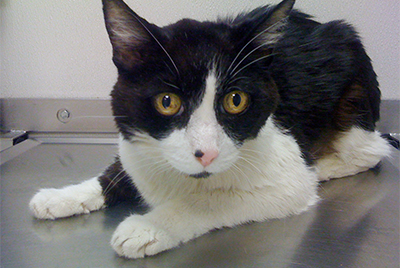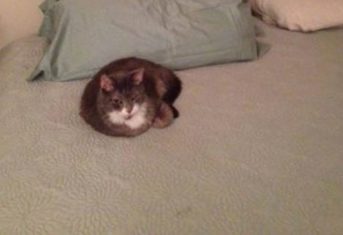Is My Cat Frail? How to Understand an Aging Cat

Is My Cat Frail? How to Understand an Aging Cat
A week ago, the owner of an elderly cat contacted me because her cat was not doing well. “Fluffy looks so frail,” she said during our telephone chat. When I saw Fluffy, I couldn’t disagree with her assessment, as Fluffy was rail thin and reluctant to move about; she clearly fit the dictionary definition of frail: a delicate state of health. The conversation made me wonder if “frail” had a medical definition, which I’ll investigate in the blog post that follows.
Frailty is not weight loss
In digging around the veterinary literature, I came across two words: sarcopenia and cachexia. Sarcopenia is the loss of muscle mass due to the natural aging process. Sarcopenia is one reason your elderly cat is no longer as sleek and slinky as she once was. Cachexia is another cause of muscle loss but is not a normal aging process. Cachexia is a poorly understood consequence of a serious illness. Cachectic animals may also lose body fat, as well as muscle. But weight loss alone does not make a cat frail.
Frailty is not advanced age
When I think of a frail human, my mind often sees my grandmother who, in her last years, was very thin and suffered from a fractured hip. Yet age alone does not make you frail. There are plenty of robust grandparents. The 2021 Feline Senior Care Guidelines published by the American Association of Feline Practitioners states, “While age alone is not a risk factor for frailty, frailty does become more common as age advances.” If age and weight do not predict frailty, then what is it?
Frailty is defined by many factors
In humans, frailty is well-defined, as assessed by a frailty index. The frailty index is an aggregate score of the negative health issues associated with frailty. Muscle loss is a major contributor to a frailty index.
However, in animals, there is less consensus. Frailty can generally be defined as a decline in an animal’s physiological reserves resulting in increased vulnerability to illness. In a paper on frailty in dogs, the authors created a scoring system called the frailty-related phenotype with five key components: undernutrition, exhaustion, low physical activity level, poor mobility and weakness. Using this scale, the authors determined that a score of 2 or greater was associated with a decreased lifespan. A more recent frailty study used a 33-point scoring system focused on physical attributes such as ability to climb stairs and the presence or absence of disease. These authors recommend their scoring system because of its similarity to a human frailty scoring system.
There has been much less progress made in defining frailty in cats, and clearly there is more to learn about feline frailty. If you have an older cat, the American Association of Feline Practitioners has great information on how to best care for your senior feline friend.

































